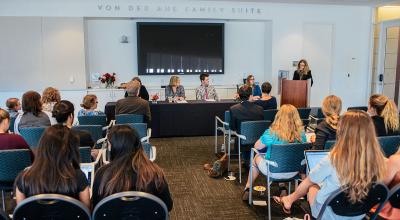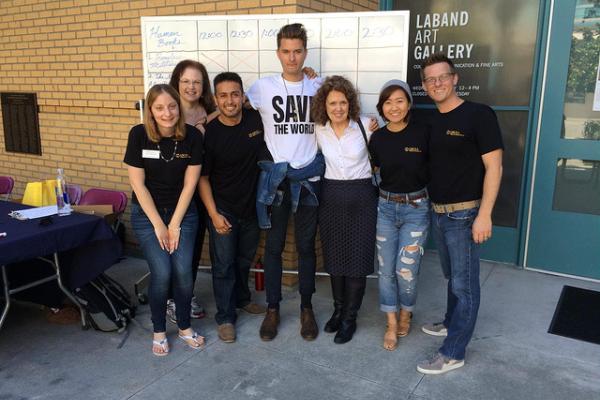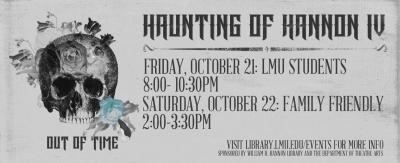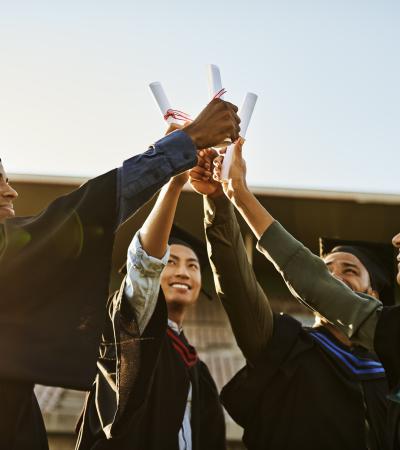
Students at Loyola Marymount University do not lack options when it comes to cultural, social and intellectual on-campus events. A typical week during the semester may include the opportunity to help make lunches for Los Angeles families in need, a discussion with actor Andrew Garfield, a dodgeball tournament, a “bioethics coffee hour,” a lecture on Cuban revolutionaries or an electropunk concert.
For librarians tasked with marketing programs to this type of community, one already saturated with targeted marketing, the challenge is not getting our users’ attention. College students are, for the most part, a captive audience. Instead, it is a challenge to convince them to attend our events, forsaking all the other delightful and promising options available to them. I do not pretend to have the solution to that challenge, but I do have two pieces of practical advice that will make the process of marketing programs to a campus community easier to manage.
Marketing via proxy, or finding good partners

Never underestimate the potential impact of word-of-mouth. It remains the most powerful tool in your arsenal. Program marketing (like all marketing) is a type of value exchange: you give me your time, and I’ll give you an experience. One does not need to wait until the very end of the program planning process to make that offer. Begin as early as possible by bringing additional partners to the table and obtaining their buy-in from the start. By being a partner, their buy-in is almost assured. You’ve jumped the first hurdle of the value exchange.
At the William H. Hannon Library, we typically partner with three types of groups: student organizations, faculty and administrative units. Like many colleges and universities, our student organizations are required to perform service hours. Additionally, many of our student workers are involved with campus organizations. Reaching out to these group to solicit one or two volunteers during the planning process is as simple as asking our student workers, “Is this the type of event your student organization would like to support?” If the fit is right, those one or two students can be looped into the planning process (as little or as much as needed) as representatives of their student organization, adding a student perspective and increasing the likelihood of obtaining student buy-in from their peers.
By far, our strongest partners are our faculty and administrative colleagues. I make a regular habit to review the course catalog, identify any classes that align with the goals or subject matter of an event and reach out to those faculty as soon as possible. I rarely suggest that credit should be offered, but I do ask (1) what aspect of the event would most appeal to their students and (2) if they would encourage their students to attend.
Similarly, reaching out to academic units on campus whose strategic goals align with the goals of the event can produce some unique co-sponsorships. Some administrative units have direct access to students via communication channels that are unavailable to the library (e.g. direct email, Blackboard communities, housing, etc.). In the least, those units may be willing to help market the event through their communication networks, but if you are lucky (as I was this past semester), they might be willing to sponsor customized marketing material (posters, swag, giveaways, etc.).
Print and digital promotion, or don’t overdo it
I stopped making 8.5-by-11-inch fliers this semester and I haven’t regretted it for a single moment. Attendance at library events is higher than ever. I am repurposing the time I used to spend designing, printing and distributing paper fliers across campus by making phone calls to individual faculty and academic units that may be interested in knowing about (or partnering on!) specific events. For audience building, a few phone calls are worth more than 100 fliers (that no one will likely read anyway).

That said, I still take the time to print two or three large posters (the minimum size being 14-by-22 inches) that I can place near the queue area at our library’s coffee shop and within a single-panel A-frame that sits outside our front doors. Not only do these have a greater potential to attract eyeballs (due to their size and real estate), they are a lovely keepsake for our partners, who are often more than happy to post these on our behalf in their own departments or offices. These large-format posters have an added benefit: it’s easy to quickly redesign them for the high-definition digital screens in our library lobby and other similarly-sized screens installed across the campus.
Final thoughts
I recently attended the Library Marketing and Communications Conference in Addison, Texas. One of the keynote speakers, John Haydon, notably quipped that “the best social media is still air.” If I have learned anything during my first year as a full-time outreach librarian, it is that traditional face-to-face, or at least voice-to-voice, word-of-mouth marketing is the most effective outreach that I can do for library events. Keeping this in mind helps me to prioritize what little time and attention I have because, like most academic librarians, I wear many hats. If someone else is willing to wear the hat (even wear it better than me!), I am more than happy to hand it over.



